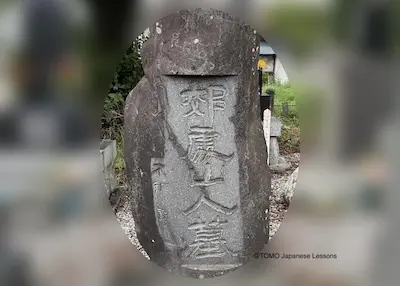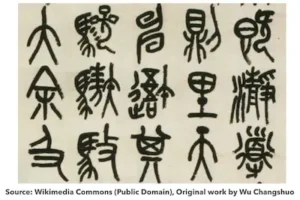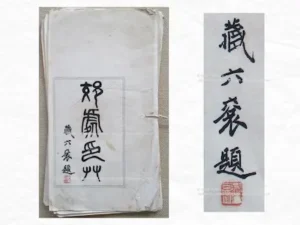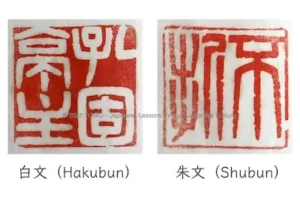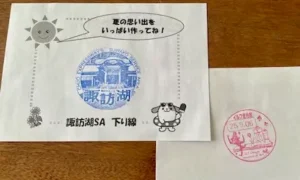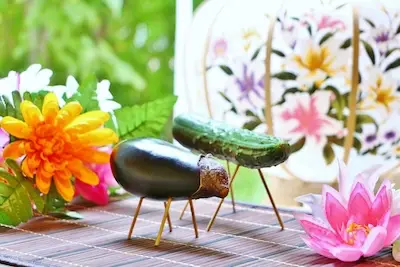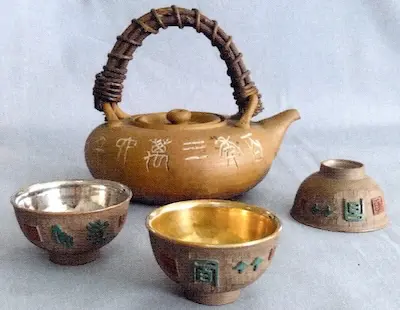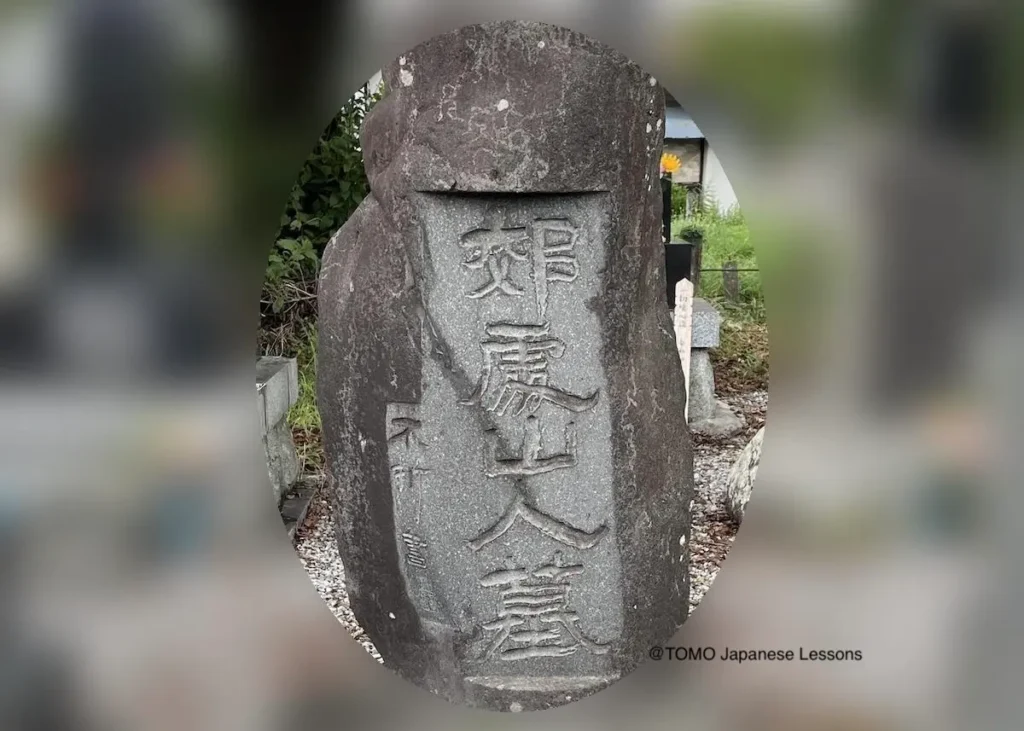
Kōsho and Fusetsu: Seals, Inscription, and Artistic Legacy
Visiting the Grave and Kōsho’s Tombstone
Ancestor’s Grave
Every year on August 16, I visit the graves of my ancestors.
At this cemetery is the tombstone of one ancestor, 郊処(こうしょ、Kōsho).
Kōsho worked as a seal engraver with his younger brother.
Kōsho’s Early Life and Training
Kōsho was born in 1866 in what is now Nagano Prefecture.
He passed away in 1932 at the age of 66.
In his teens, he studied Chinese classics with his cousin 氷湖(ひょうこ、Hyoko).
Then, at 29, he trained under the seal engraver 五世浜村六蔵(ごせいはまむらろくぞう、Hamamura Rokuzo V).
Around the age of 39, he actively submitted works to seal engraving contests held by the newspaper 日本(にっぽん、Nihon).
Through this, he honed his skills and created many works.
He continued to dedicate himself to seal engraving throughout his life.
The Tombstone and Fusetsu
The inscription on Kōsho’s tombstone was written by 中村不折(なかむらふせつ、Nakamura Fusetsu) (1866–1943).
Fusetsu was both an illustrator and a calligrapher.
I will introduce Fusetsu in the next section.
This inscription shows the deep bond between the two men.
Nakamura Fusetsu, an Artist
Leading Calligrapher and Illustrator
中村不折(なかむらふせつ、Nakamura Fusetsu) was one of Japan’s leading calligraphers.
He also worked as an illustrator.
He is especially famous for creating the illustrations for 夏目漱石(なつめそうせき、Natsume Sōseki)’s novel I Am a Cat.
In addition, he designed the logo for 中村屋(なかむらや、Nakamuraya) in Shinjuku.
Rare Inscriptions
Fusetsu did not leave many inscriptions.
However, even though they are few, each one is precious.
The most well-known is the inscription on 森鴎外(もりおうがい、Mori Ōgai)’s tombstone.
Furthermore, Kōsho’s tombstone is another rare example of his work.
Connection with Kōsho
Fusetsu and Kōsho were both born in 1866.
Fusetsu once lived in his hometown in Nagano.
This connection brought the two men together.
Their relationship will be introduced in the next section.
Kōsho and Fusetsu’s Collaboration
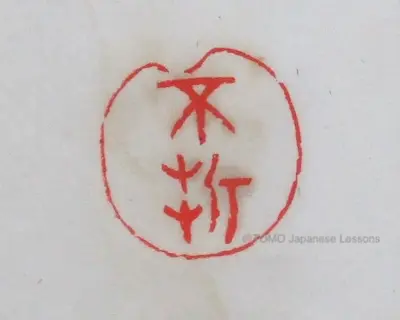
Seal Engravings for Fusetsu
Kōsho created seal engravings for Fusetsu.
The seals themselves were given to the clients who requested them.
Therefore, the originals did not remain with the seal engraver.
However, Kōsho kept a collection of the seals he made.
Many of Fusetsu’s seals are included in this collection.
Difficulty in Reading the Seals
Many of Kōsho’s seals contain old Chinese characters.
As a result, some are difficult to read today.
On the other hand, Fusetsu’s characters are still commonly used.
Therefore, they can be identified easily.
Correspondence and Bond
In addition, Kōsho also kept New Year’s cards sent by Fusetsu.
From the words written on them, we can sense the depth of their relationship.
Because of this close connection, Kōsho asked Fusetsu to write the inscription on his tombstone.
Living in the same era and connected through art, their bond remains visible even today.
Explore the meaning of the seal carving frame and my brother’s story in my header.
Explore articles on Kōsho, Sōseki, and seals → [Seal Legacy]
Japanese of the Day / 今日の日本語
- Word:篆刻(tenkoku) – seal engraving
- Meaning:carving characters into stone or other material to make a seal
- Example:彼は趣味で篆刻をしています。
(He practices seal engraving as a hobby.) - Fun Fact:The word 篆刻 (tenkoku) refers to the traditional art of carving characters into stone to make seals. It has been practiced in China and Japan for centuries and is valued as both a practical craft and a form of fine art.
Would you like to experience traditional Japanese culture?
Just like in the story I shared, you can explore Japan’s long-standing cultural traditions with me
in my upcoming “Japanese Culture Course“. Stay tuned!
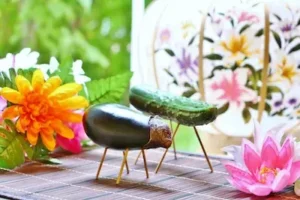
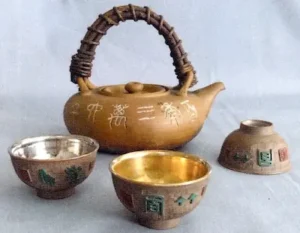
お墓参りと郊処の墓碑
毎年8月16日には、先祖代々のお墓参りへ行きます。
その墓所には、先祖の一人である郊処(こうしょ)の墓碑があります。郊処は弟とともに、篆刻家として活動していました。
郊処は1866年に今の長野県に生まれ、1932年に66歳で亡くなりました。
10代の頃、従兄弟の氷湖(ひょうこ)から漢学を学びました。そして、29歳ごろに篆刻家・五世浜村六蔵に師事しました。
さらに、39歳ごろには新聞「日本」の篆刻募集に盛んに応募しました。こうして技を磨き、多くの作品を制作しました。
その後も生涯を通じて篆刻に力を注ぎました。
この墓碑に刻まれた文字を書いたのは、同じく1866年生まれの芸術家、中村不折(なかむらふせつ、挿絵作家・書家)です。
不折については次でご紹介しますが、墓碑からも二人の深いつながりを感じることができます。
中村不折という芸術家
中村不折(なかむらふせつ)は、日本を代表する書家です。挿絵画家としても活躍しました。
特に有名なのは、夏目漱石の小説『吾輩は猫である』の挿絵を描いたことです。さらに、新宿「中村屋」のロゴもデザインしました。
不折は碑文を多くは残しませんでした。しかし、数は少なくても、どれも貴重なものです。
その中で特によく知られているのが、森鴎外の墓碑の文字です。さらに、郊処の墓碑もまた、不折が手掛けた稀なものです。
不折氏と郊処は同じく1866年生まれです。不折は一時、郷里の長野で生活していたことがありました。
このことが二人を結びつけました。二人の交流については、次でご紹介します。
郊処と不折の交流
郊処は不折氏の印を制作しています。印鑑自体は依頼者に渡すため、篆刻家の手元には残りません。
しかし、郊処は制作した印をまとめた作品集を残しており、その中に不折氏の印も数多く収められています。
郊処が残した印の中には、現在ではあまり使われない漢字も多く含まれています。そのため、読解が難しいものもあります。
一方で、不折氏の漢字は今も使われているものが多く、すぐに見つけることができます。
また、郊処のもとには不折氏から送られてきた年賀状も残っています。
文字だけでなく、そこに添えられた言葉からも二人の交流の深さを感じることができます。
こうした関係があったからこそ、郊処の墓碑を不折氏にお願いすることになったのです。
同時代に生き、芸術を通じて結びついた二人の絆は、今も確かに形として残されています。
ヘッダーにある篆刻額と弟のエピソードの意味を探ってみてください。
郊処、漱石、印章などの記事はこちら → [Seal Legacy]

